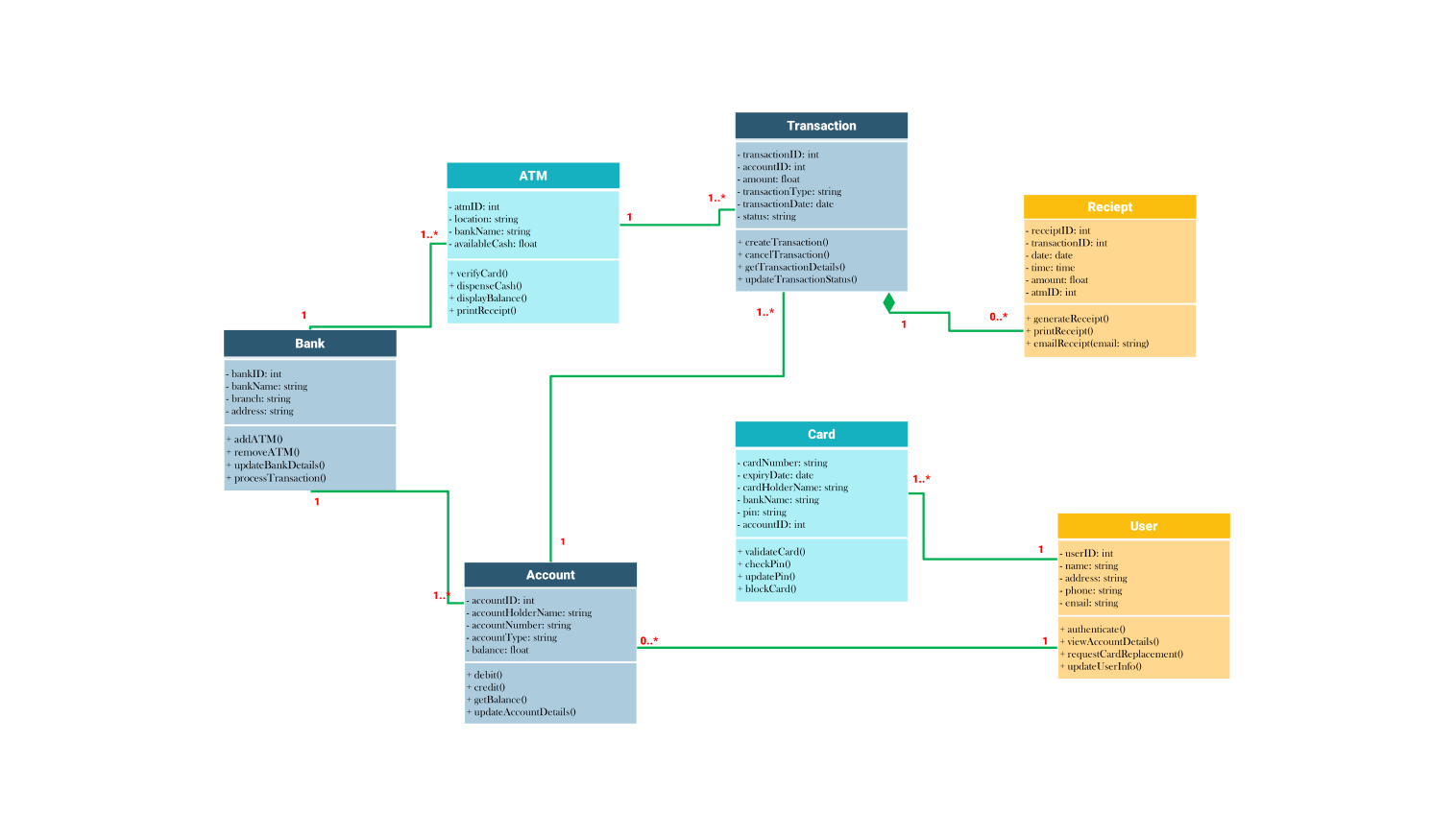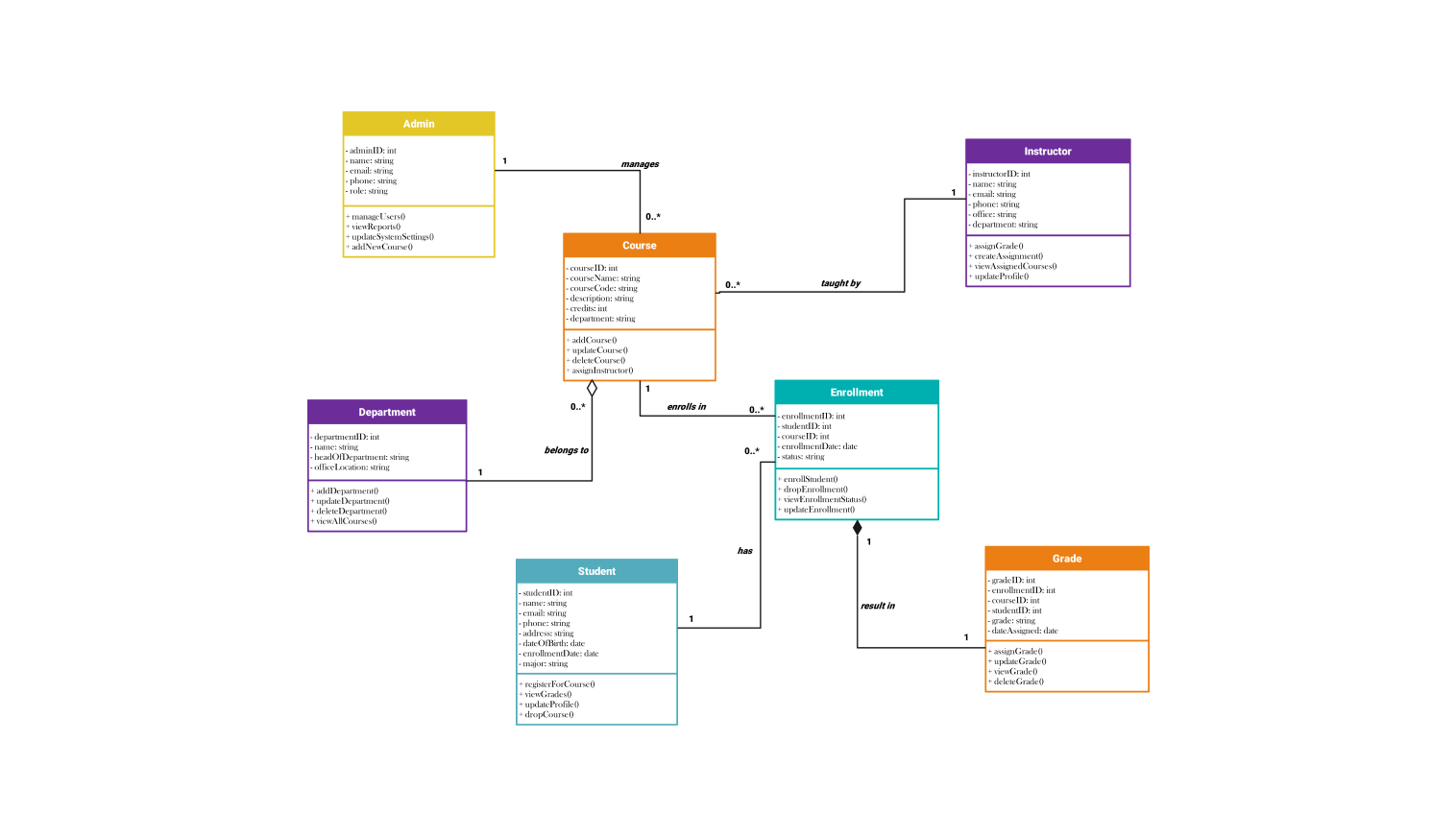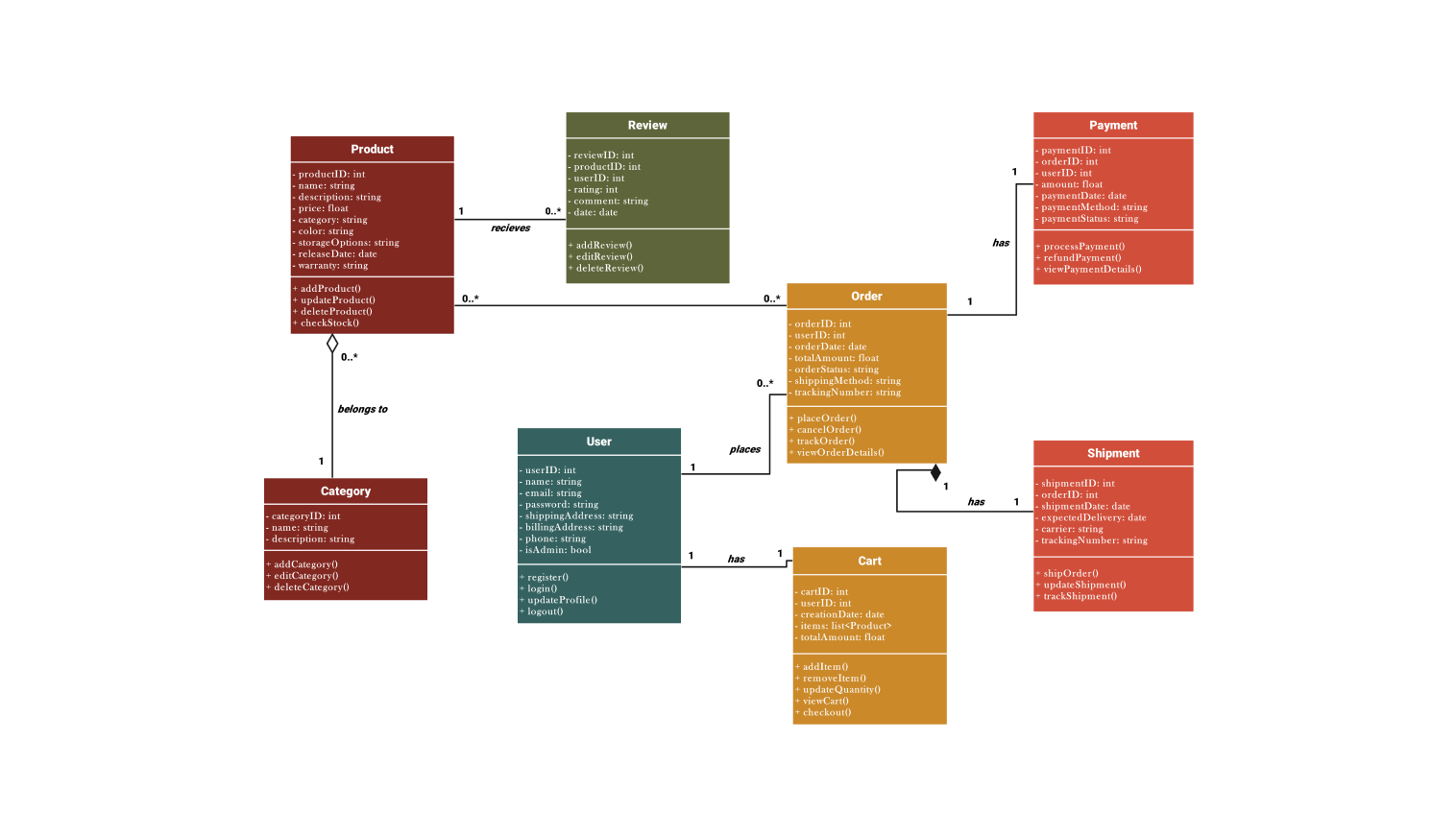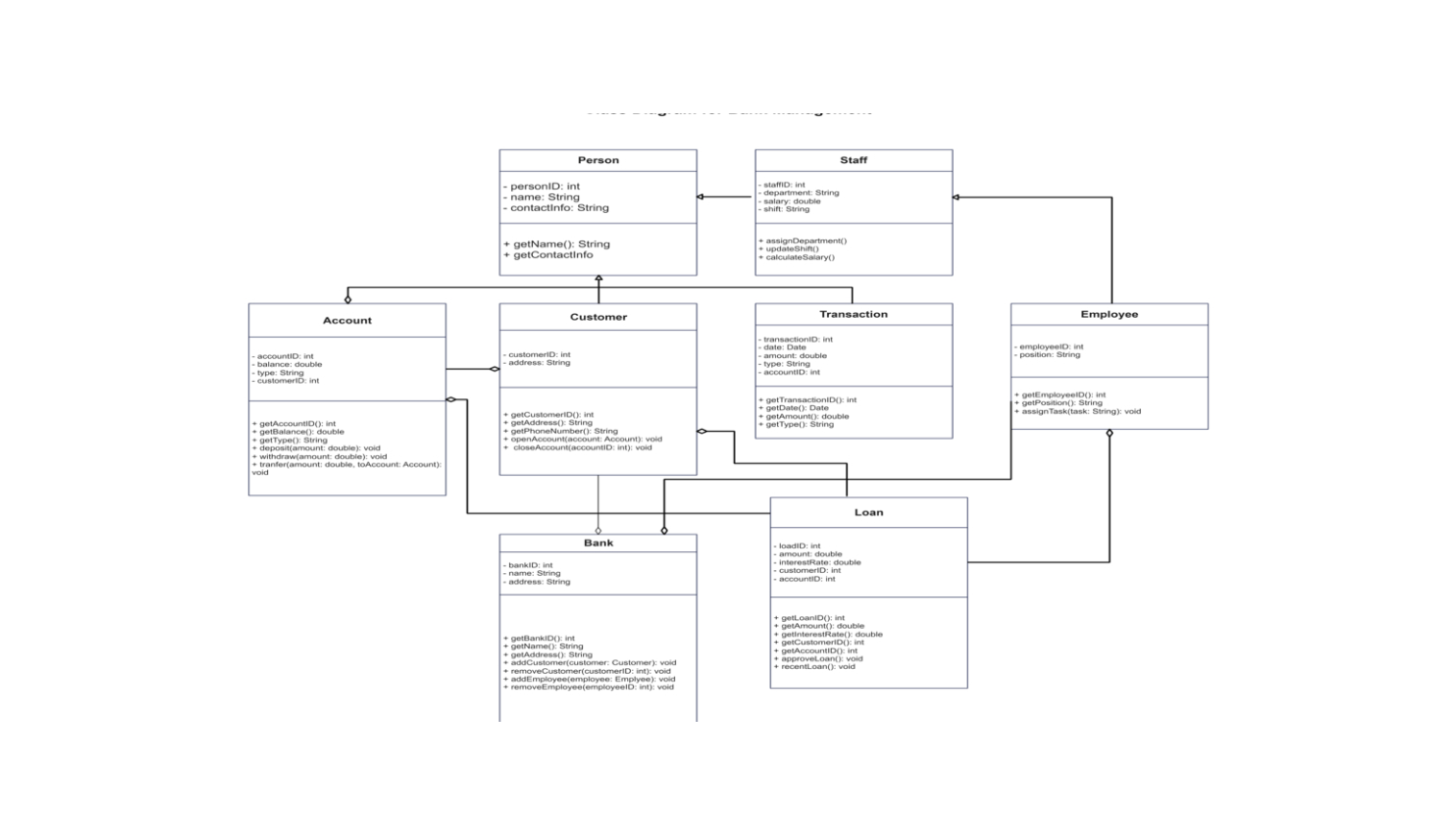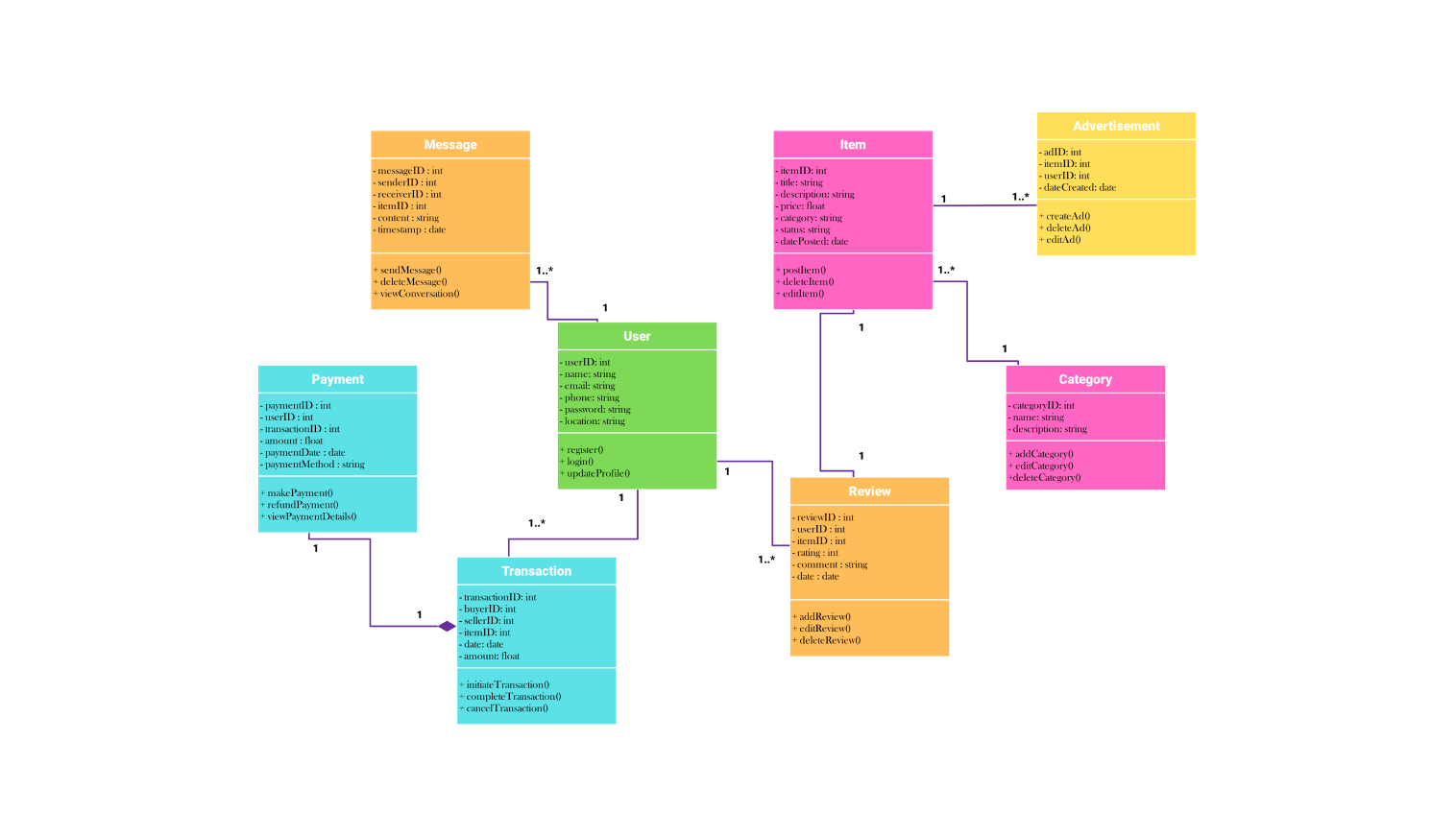- All templates
- Class diagram templates
- Class diagram e-commerce
About this class diagram for e-commerce
This class diagram helps to understand an e-commerce working model by providing an in-depth overview of the system. It maps out the relationship of several classes interacting within the system. These include users, products, categories, orders, payments, and carts.
The class diagram describes the client’s behavior through their interaction with the system. They make purchases and create shopping experiences for them which helps them from browsing products to making payments.
The user class is of key importance to the system as it represents the people who are the actual buyers. They create accounts, log in, and manage their accounts. Users provide information that includes username, email, and address.
This class is important as it shows a user’s buying journey and illustrates the interaction of this class with other classes within the system.
The product class denotes the items that are available for purchase in the system. Products contain details like name, description, price, and stock. The category class organizes products into groups based on some categories. Each product belongs to a single category which makes the customers searching easier.
The category class organizes products into relevant categories. This eases the user’s exploration of different products. Each category can contain numerous products, and it allows users to add or remove products. This helps in keeping the system dynamic and up-to-date with available items.
The order class stores the order-related details such as the order ID, user ID, order date, status, and total amount. Orders interact with the payment class to track the transaction status from order placement to fulfillment. This class guarantees that the purchasing process is properly recorded and handled by the system.
The payment class handles all monetary transactions within the system. It is related to orders and contains information such as the payment ID, order ID, payment date, amount, and payment method. This session teaches how to process and refund payments. It ensures that the financial part of the system is secure and efficient.
The cart class represents the working of the shopping cart, which allows users to add and delete products before placing an order. Each cart is assigned to a specific user and provides options for managing items and calculating the total amount. The cart serves as a temporary storage place for things that the user wishes to purchase.
Related templates
Get started with EdrawMax today
Create 210 types of diagrams online for free.
Draw a diagram free Draw a diagram free Draw a diagram free Draw a diagram free Draw a diagram free
